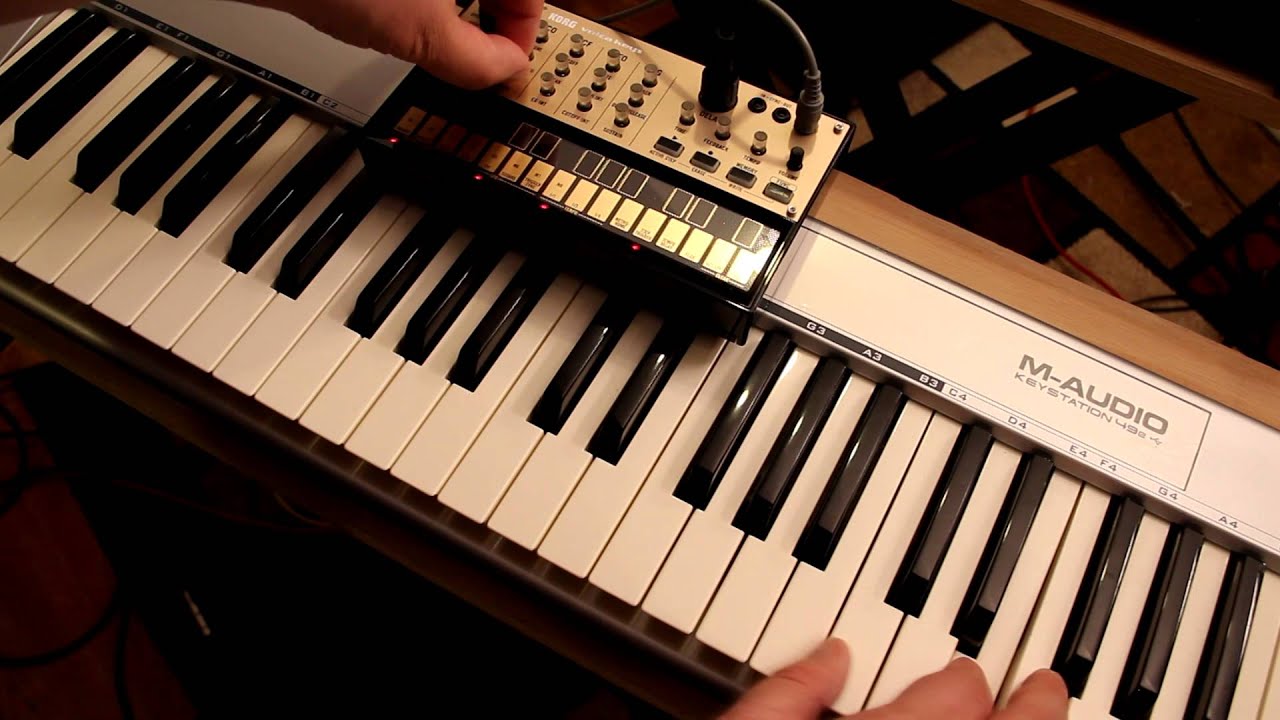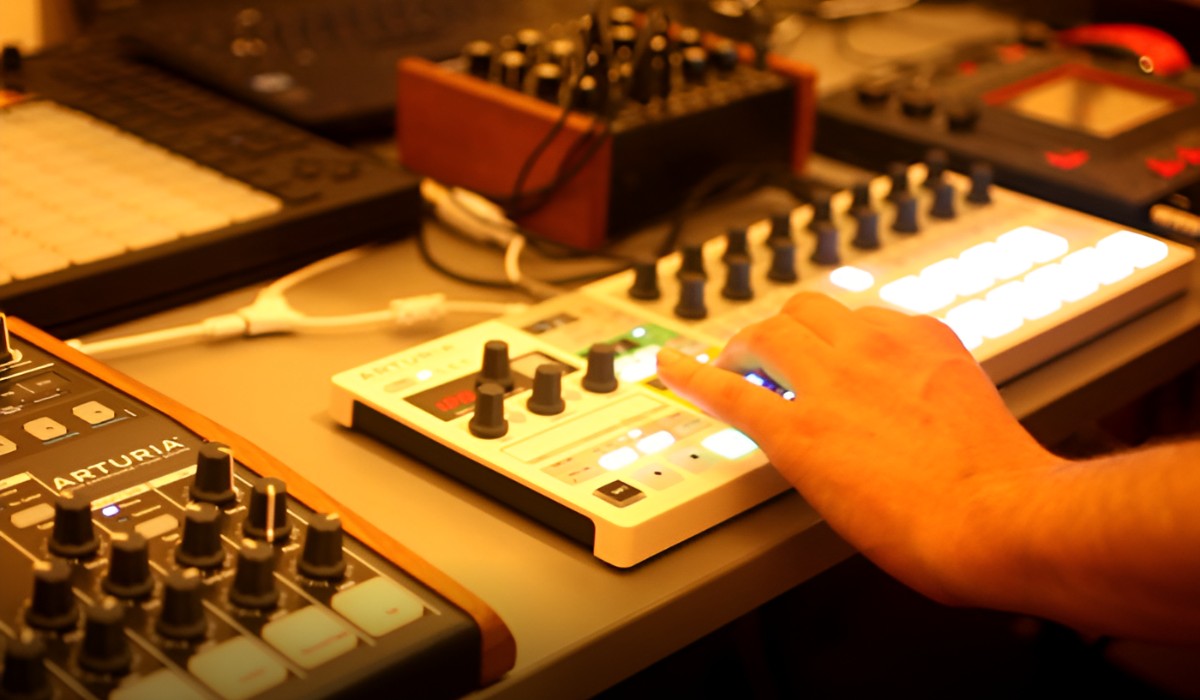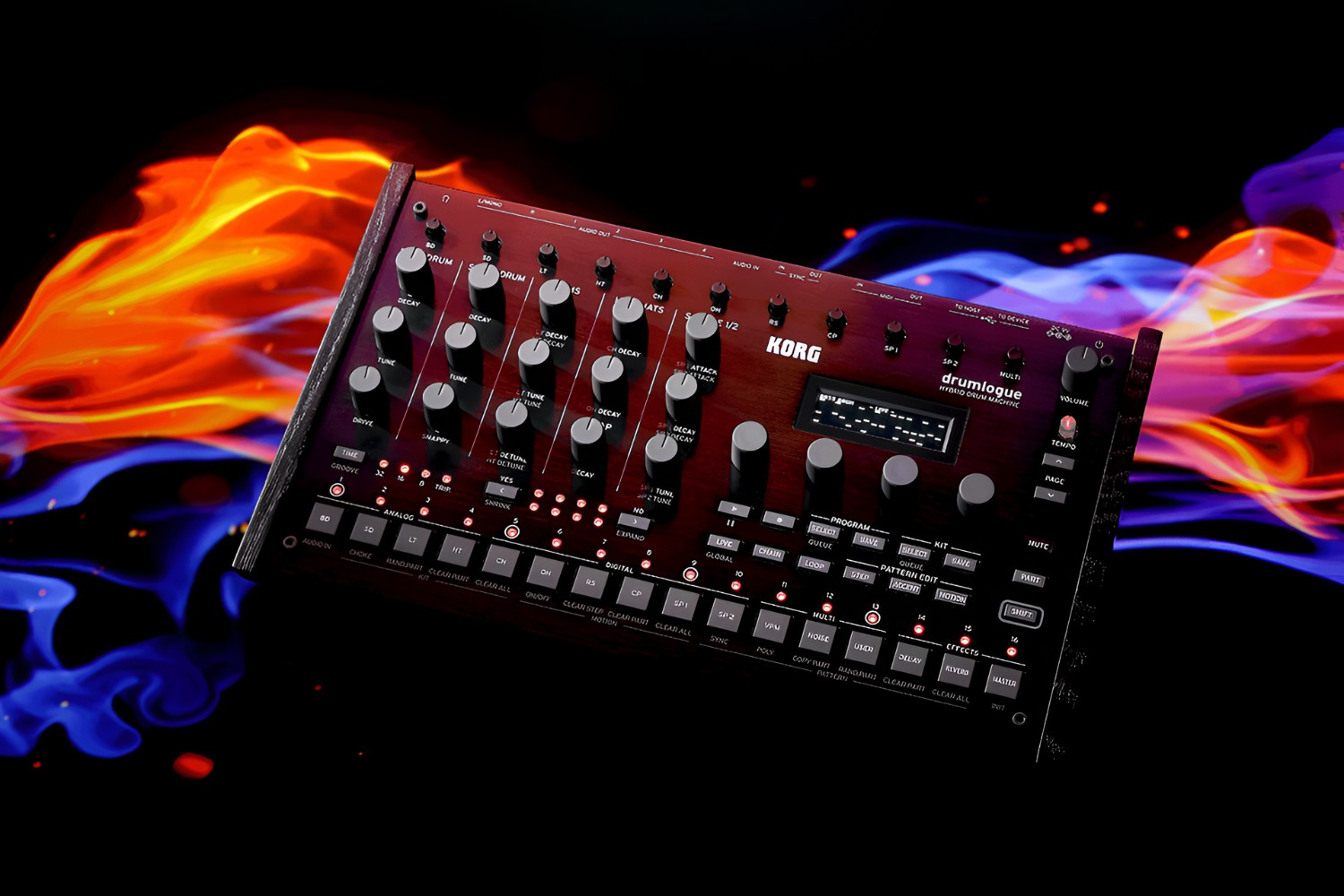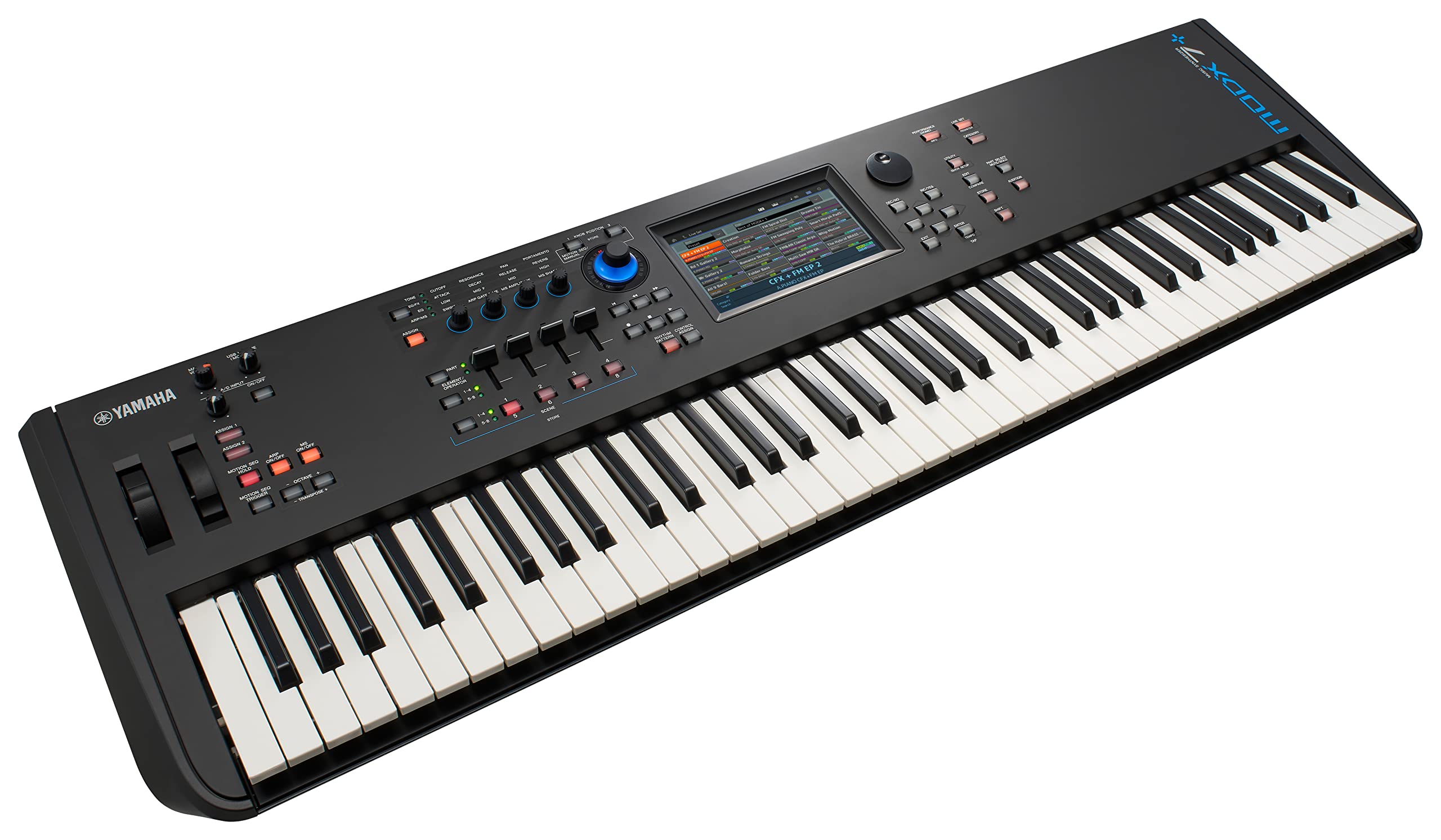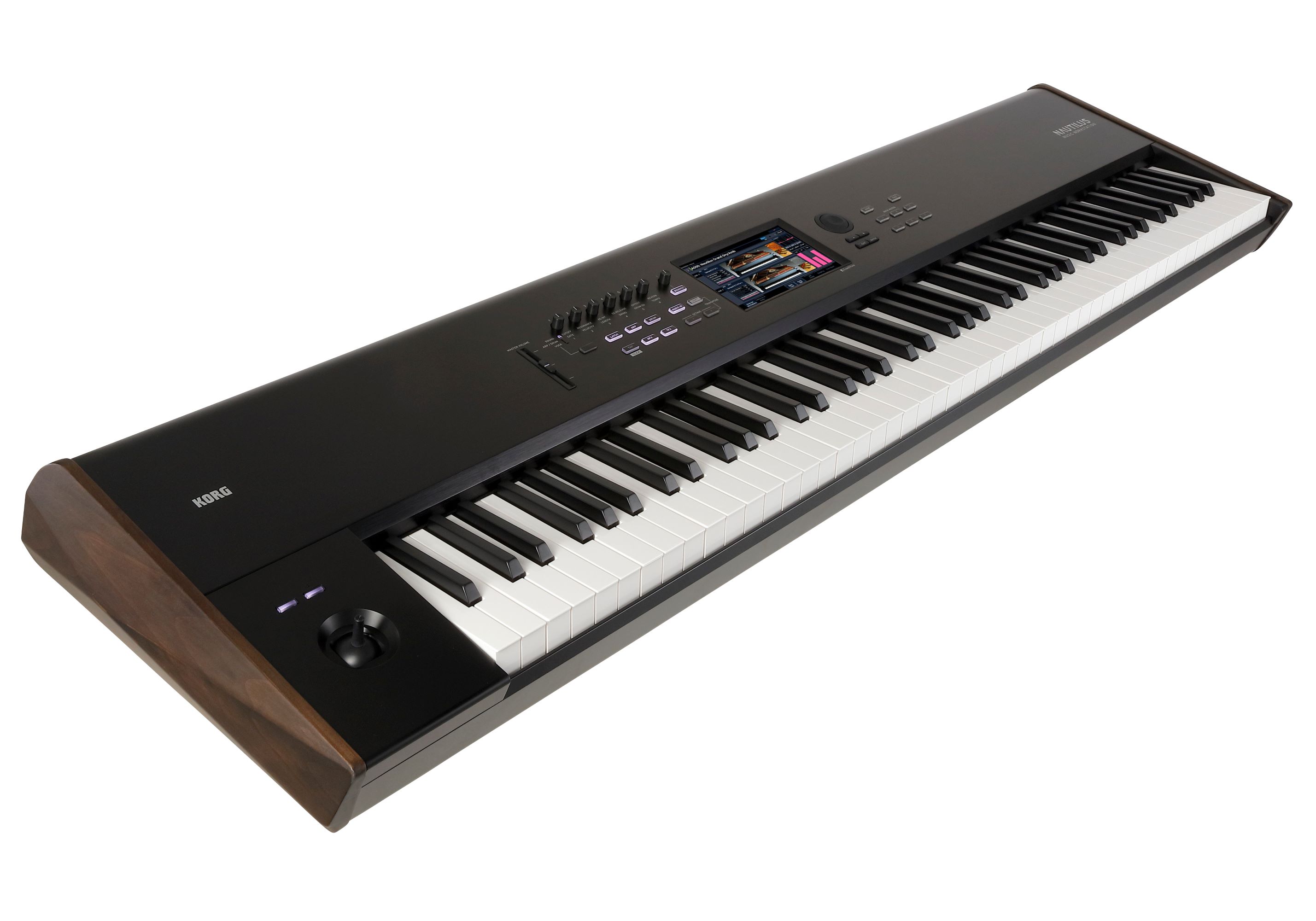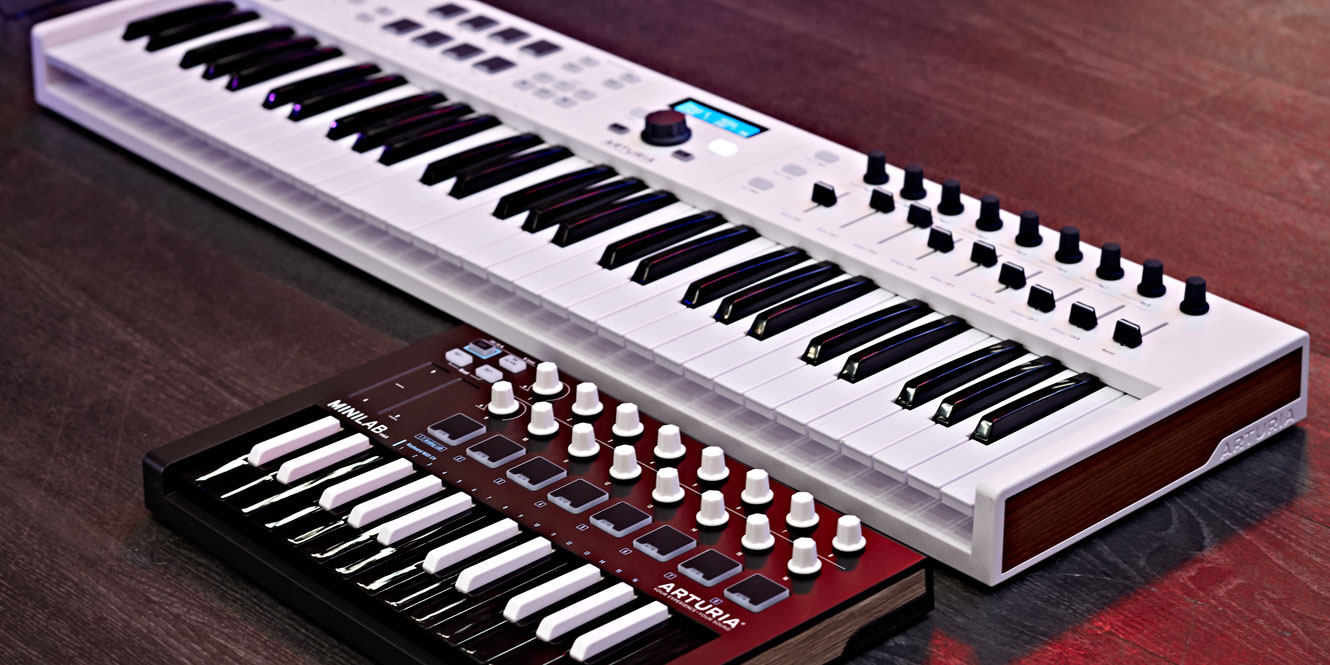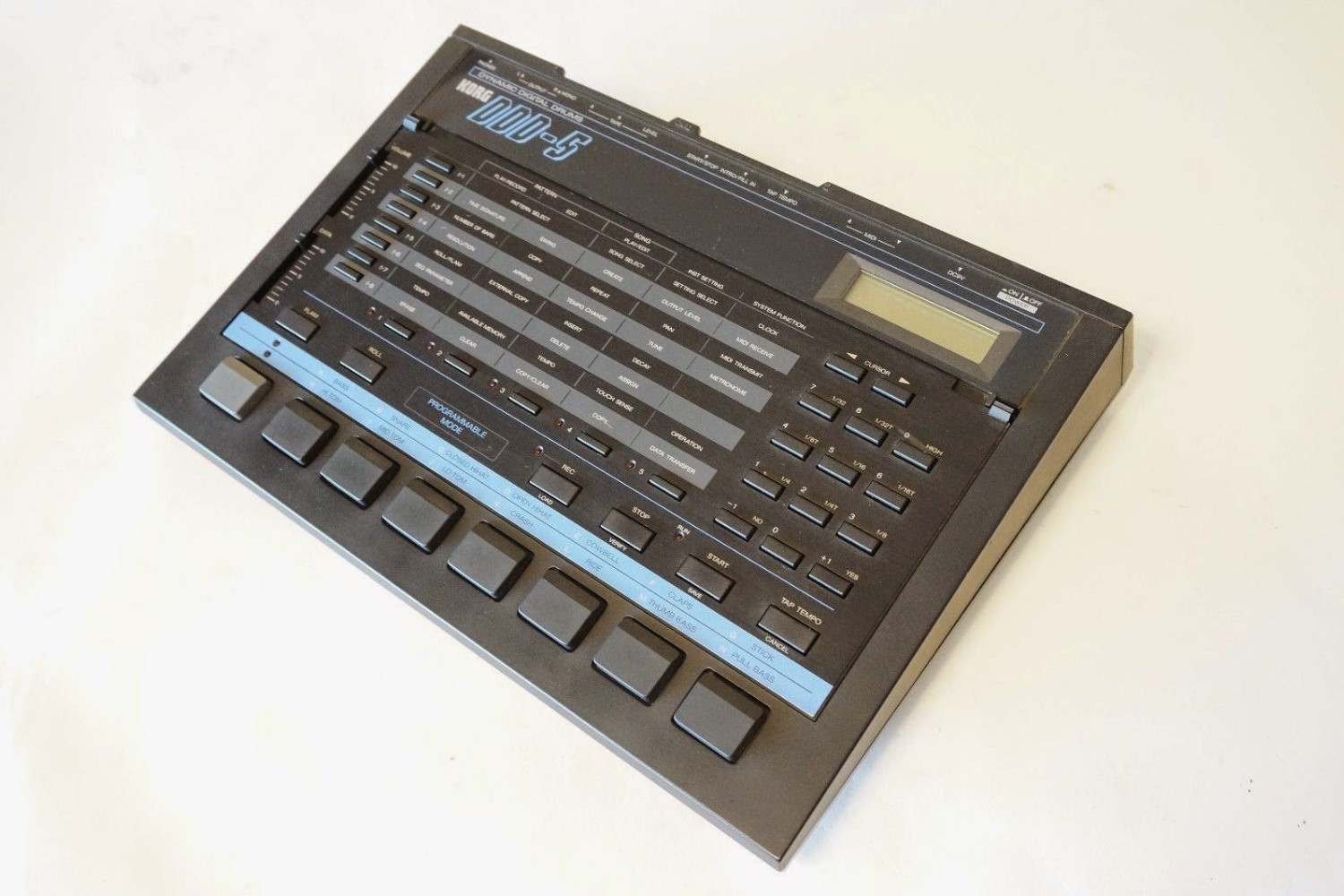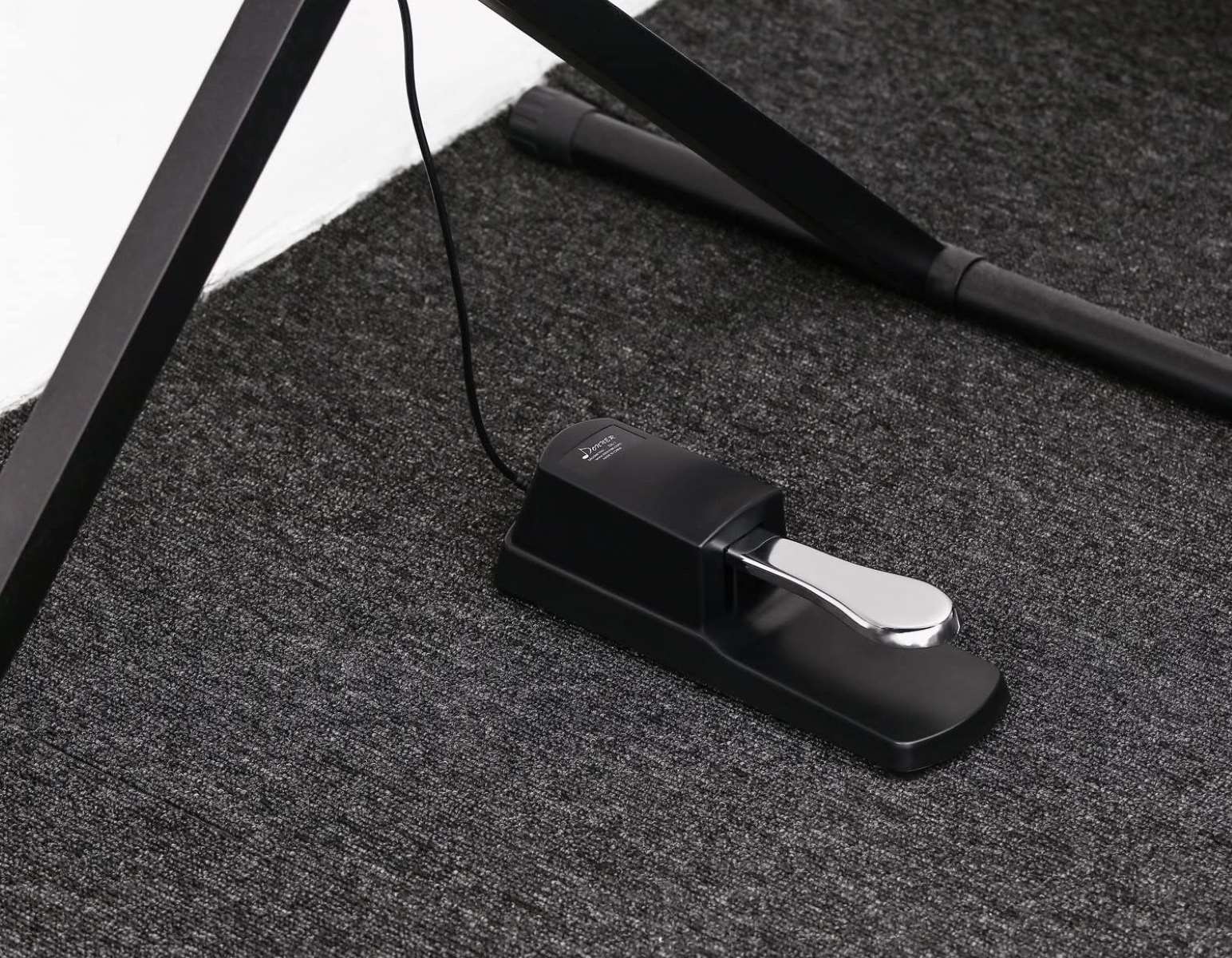Introduction
So, you've got your hands on a MIDI keyboard and a Korg Volca, and you're eager to dive into the world of music production. The good news is that you can seamlessly integrate these two powerful tools to enhance your music-making experience. By connecting your MIDI keyboard to the Korg Volca, you can unlock a whole new realm of creative possibilities and take your music to the next level.
In this guide, we'll walk you through the process of using a MIDI keyboard with your Korg Volca, covering everything from setting up your MIDI keyboard to configuring the Korg Volca settings. Whether you're a seasoned musician or a beginner exploring the art of music production, this guide will equip you with the knowledge and skills to harness the full potential of these versatile instruments.
By the end of this tutorial, you'll be able to seamlessly control and play your Korg Volca using your MIDI keyboard, opening up a world of sonic exploration and musical expression. So, let's dive in and unlock the synergy between your MIDI keyboard and Korg Volca, unleashing your creativity and musical prowess.
Setting Up Your MIDI Keyboard
Before you can start using your MIDI keyboard with the Korg Volca, you need to ensure that it is properly set up and ready to communicate with the Volca. Here’s a step-by-step guide to help you get your MIDI keyboard up and running:
- Power On Your MIDI Keyboard: Begin by powering on your MIDI keyboard. Most MIDI keyboards can be powered via USB or an external power source. Ensure that the keyboard is connected to a power supply and turned on.
- Connect Your MIDI Keyboard to Your Computer: If your MIDI keyboard requires a computer for configuration, connect it to your computer using a USB cable. This will allow you to access the keyboard’s settings and configure it for use with the Korg Volca.
- Install Any Required Drivers: Depending on your MIDI keyboard model, you may need to install specific drivers to ensure compatibility with your computer. Check the manufacturer’s instructions and website for any necessary driver downloads and installation guidelines.
- Configure MIDI Settings: Access the MIDI settings on your keyboard and ensure that it is set to send and receive MIDI data. This step is crucial for establishing communication between your MIDI keyboard and the Korg Volca.
- Test MIDI Connectivity: Verify that your MIDI keyboard is successfully sending and receiving MIDI data. You can use MIDI monitoring software or your music production software to check if the MIDI signals are being transmitted and received as expected.
Once your MIDI keyboard is set up and configured, you’re ready to proceed to the next step: connecting it to the Korg Volca. A properly configured MIDI keyboard forms the foundation for seamless integration with the Korg Volca, allowing you to harness the full potential of both instruments in tandem.
Connecting Your MIDI Keyboard to Korg Volca
Now that your MIDI keyboard is set up and configured, it’s time to establish a physical connection between the keyboard and the Korg Volca. This connection will enable the MIDI keyboard to transmit control signals to the Volca, allowing you to play and manipulate its sounds using the keys, knobs, and other controls on your MIDI keyboard. Follow these steps to connect your MIDI keyboard to the Korg Volca:
- Obtain the Necessary Cables: You’ll need a standard MIDI cable to connect your MIDI keyboard to the Korg Volca. Ensure that you have the appropriate cable with the correct connectors for both devices.
- Locate the MIDI Ports: Identify the MIDI ports on both your MIDI keyboard and the Korg Volca. Most MIDI keyboards feature MIDI Out ports, while the Korg Volca has a MIDI In port. These ports are typically 5-pin DIN connectors.
- Connect the MIDI Cable: Plug one end of the MIDI cable into the MIDI Out port on your MIDI keyboard and the other end into the MIDI In port on the Korg Volca. Ensure that the connections are secure to avoid any signal disruptions during operation.
- Power On the Devices: Power on both your MIDI keyboard and the Korg Volca. The devices should now be physically connected via the MIDI cable, establishing a direct link for MIDI signal transmission.
With the MIDI keyboard and Korg Volca physically connected, you’ve laid the groundwork for seamless communication between the two devices. The MIDI cable serves as the conduit through which your MIDI keyboard will transmit control signals to the Volca, allowing you to play and manipulate its sounds with precision and expressiveness.
Once the physical connection is established, you’re ready to move on to the next crucial step: configuring the settings on the Korg Volca to recognize and respond to the MIDI signals from your keyboard.
Configuring Korg Volca Settings
Configuring the settings on your Korg Volca is essential to ensure that it recognizes and responds to the MIDI signals transmitted from your connected MIDI keyboard. By configuring the Volca’s settings, you can establish the parameters for MIDI control, enabling seamless interaction between the keyboard and the Volca. Follow these steps to configure the Korg Volca settings for MIDI integration:
- Access the Global Settings: On your Korg Volca, locate the global settings menu. This menu allows you to configure various parameters that affect the device’s overall behavior, including MIDI settings.
- Enable MIDI Input: Within the global settings, ensure that the MIDI input function is enabled. This setting allows the Korg Volca to receive MIDI messages from external devices, such as your MIDI keyboard, and respond to incoming MIDI control signals.
- Assign MIDI Channels: If your MIDI keyboard and Korg Volca support MIDI channels, assign a specific MIDI channel for communication between the two devices. This ensures that the MIDI signals from your keyboard are directed to the appropriate destination on the Volca, preventing conflicts with other MIDI devices.
- Configure MIDI Control Parameters: Depending on the capabilities of your Korg Volca model, you may have the option to configure specific MIDI control parameters, such as note mapping, MIDI CC assignments, and MIDI sync settings. Adjust these parameters to align with your preferred MIDI control workflow and performance requirements.
By configuring the settings on your Korg Volca, you establish a seamless interface between your MIDI keyboard and the Volca, allowing for intuitive and responsive control over the Volca’s sound parameters and performance features. Once the settings are properly configured, the Korg Volca is primed to receive and interpret MIDI signals from your connected MIDI keyboard, enabling a dynamic and expressive musical experience.
Playing and Controlling Korg Volca with Your MIDI Keyboard
With your MIDI keyboard connected and the Korg Volca settings configured, you’re now ready to unleash the full potential of this integrated setup. Controlling the Korg Volca with your MIDI keyboard opens up a world of creative possibilities, allowing you to play, manipulate, and perform with precision and expression. Here’s how you can effectively play and control the Korg Volca using your MIDI keyboard:
- Triggering Sounds: Use the keys on your MIDI keyboard to trigger and play the sounds on the Korg Volca. Each key can be assigned to a specific note or sound parameter on the Volca, providing a versatile and tactile interface for musical expression.
- Modulating Parameters: Leverage the knobs, sliders, and modulation wheels on your MIDI keyboard to control various parameters on the Korg Volca in real time. This hands-on control allows for dynamic manipulation of sound, filter cutoff, resonance, and other sonic characteristics of the Volca’s output.
- Sequencing and Performance: If your MIDI keyboard features sequencer controls or performance pads, use these features to trigger sequences, patterns, and rhythmic elements on the Korg Volca. This adds a layer of versatility to your performance, allowing for intricate and dynamic musical arrangements.
- Utilizing MIDI Effects: Explore the use of MIDI effects and controllers on your keyboard to add depth and complexity to the Korg Volca’s sound. MIDI arpeggiators, chord generators, and other performance effects can be employed to augment the Volca’s sonic capabilities and enhance your musical compositions.
By seamlessly integrating your MIDI keyboard with the Korg Volca, you empower yourself with a powerful and expressive musical instrument that combines the tactile feedback of a keyboard with the sonic versatility of the Volca’s synthesis engine. Whether you’re crafting melodic leads, shaping intricate rhythms, or exploring experimental soundscapes, the synergy between your MIDI keyboard and the Korg Volca amplifies your creative potential and musical expression.
With the ability to play, manipulate, and perform with precision, the integrated setup of your MIDI keyboard and Korg Volca becomes a dynamic platform for musical exploration and sonic innovation, elevating your music production endeavors to new heights.







